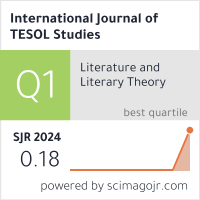2632-6779 (Print)
2633-6898 (Online)


Scopus
Ulrich’s Periodicals Directory (ProQuest)
MLA International Bibliography
MLA Directory of Periodicals
Directory of Open Access Journals (DOAJ)
QOAM (Quality Open Access Market)
British National Bibliography
WAC Clearinghouse Journal Listings
EBSCO Education
ICI Journals Master List
ERIH PLUS
CNKI Scholar
Gale-Cengage
WorldCat
Crossref
Baidu Scholar
British Library
J-Gate
ROAD
BASE
Publons
Google Scholar
Semantic Scholar
ORE Directory
TIRF
China National Center for Philosophy and Social Sciences Documentation
Nadya Shaznay Patel
Singapore Institute of Technology, Singapore
Abstract
Unlike face-to-face classes where physical presence is a given, the lack of “real” interpersonal connections to establish a strong social presence in online teaching and learning experience affects student learning. Students tend to feel isolated and disengaged. This paper explores how I sought to create a supportive environment for my students reading a critical thinking and communication module for community leadership during an Emergency Remote Teaching (ERT) experience amid the pandemic last year in 2020. Using the Community of Inquiry framework as a lens to reflect on how well I established social presence in the online environment, I thematically analysed student qualitative feedback on their learning experiences. This investigation also serves as an inquiry into the effectiveness of the dialogic scaffolding pedagogical framework I adopted for the module. Moreover, this study compliments a reflection on the impact of my teaching philosophy that students are social learners before they become independent learners. I believe that students learn not as isolated beings, but as active members of a community; what they learn and how they make sense of knowledge depends on the social context in which they learn. The findings revealed the effectiveness of the application of dialogic scaffolding principles, which focuses on the orchestration of talk to scaffold student learning and co-construct understanding. With a socio-constructivist view of teaching, many tutors could consider their classes of students as communities of participants in learning. The paper concludes with recommendations for strategies that tutors can adopt to establish a supportive environment for physically separated communities of learners.
Keywords
Emergency remote teaching, social presence, dialogic scaffolding, online teaching and learning